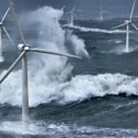If you always do what you always did, you will always get what you have always got
Denne artikkelen er over ti år gammel og kan inneholde utdatert informasjon.
By Geoffrey Gilpin
On a cold and rainy evening this fall, our car tested its mettle against a cliff face and lost. It crept, bumper between its wheels, to the nearest body-shop and lay down to lick its wounds.
Two weeks later, with the brief stroke of a pen our insurance company had decided that our car, which had seen my wife and I through; our studies, numerous moves, our honeymoon and a recent dash to the hospital to give birth to our first child, was worth less than the repairs would cost them. Rest in peace, perhaps we will meet again in another recycled form.
So, here we stood in 2011, confronted with the conundrum of what choice of vehicle will cover our family’s needs? For my wife and I, who have our backgrounds in ecology and (environmental oriented) engineering respectively, this was no quick decision, but involved a plethora of variables extending beyond the dominating triumvirate of; purchase price, fuel economy and space. We found ourselves particularly hung-up on the criteria that our decision should be environmentally sound.
My colleague Erling Holden has provided the readers of this blog forum with a very sound summary of the past and present endeavours concerning renewable energy in the transport sector (29.04 and 29.08). He ended his last blog submission with the quote; “where there is a will there is a way” and his personal rebuttal; “do we [really] want alternative energy carriers [in transport]?”
My wife and I have believed that we did, and this is evident is some of our own personal follies in this field which include two completed applications to Transnova for both; a home-scale biodiesel from used-cooking-oil production facility, and a micro hydro-powered charging station for an electric vehicle. Both applications now occupy space in my folder of unrealized dreams at home. This is in addition to various register to be one of the first to own electric-, and even compressed-air powered vehicles, though I am kind of relieved that they never replied.
So what have my wife and I decided? We will buy an older used vehicle without any especially favourable environmental profile, though safe, reliable and affordable enough for a young family. Furthermore, we have decided that instead of driving the whole distance to work, we will car-pool to the nearest bus-stop (24 km) and travel the remaining distance to work by bus (40 km). Many readers might now be saying that there is nothing new here, but for those who have visited Sogn and Fjordane County you can acknowledge that this is a seldom chosen option for those not living in the few built-up corridors.
All and all, it turns out this option of car-pooling and collective traffic, has not only improved our environmental profile, it has saved us economically both directly and indirectly, as a quick review of my bankcard transactions revealed that a non-negligible amount of money was being spent impulsively at habitual petrol station stops. In fact, the economic savings are to such a degree that I can actually defend working one day less a week without it negatively affecting our family’s previous level of utility.
In summary, as odd as it might sound, it took us some time before we were reminded that there are numerous approaches towards achieving sustainable mobility; improving efficiency, finding alternatives, and reduction, further reading can be found under “Achieving Sustainable Mobility” Ashgate publishers 2007. We opted for no improvement in vehicle efficiency, though found the alternative of collective transport suitable, the economic savings of this transition resulted in an overall reduction of travel by one day a week, all without any real effect on our family’s utility.
There can of course arise long discussions concerning productivity and various rebound effects, among other. I have presented here a very simplified example of how de-growth can be applied, and this seems to work for our situation. I would though like to challenge the readers to evaluate their current level of consumption and to ask themselves; is this sustainable and does the only option lie in more environmentally friendlier options, or are there other means?







